Dirt Jump Bikes: The Ultimate Choice for Riding Skate Parks and More
Introduction
Dirt jump bikes, also known as DJ bikes and dirt jumpers, are the perfect companions for those seeking adrenaline-fueled adventures on skate parks, pump tracks, and meticulously designed jumps. Let’s delve into these exceptional bicycles, exploring their features, materials, key components, and what sets them apart from other mountain bikes and BMXs.
What Defines a Dirt Jump Bike?
Dirt jump bikes are purpose-built machines, specially crafted to conquer formidable dirt jumps. With their low-slung frames, 26in wheels, single-speed drivetrains, and rear-only brakes, these bikes navigate smoothly through thrilling jump lines. Their remarkable agility and compact design make them equally formidable in skate parks and pump tracks, where the ability to maneuver swiftly and generate efficient speed is crucial. It’s no wonder that dirt jump bikes are the preferred choice among riders participating in slopestyle events like the FMB World Tour and 4x races.
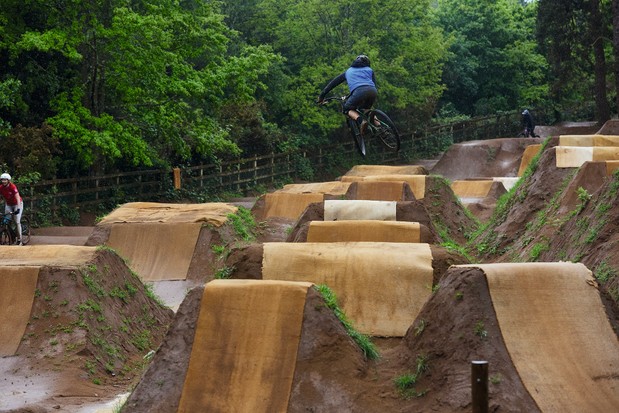
Frame Materials: The Pillars of Strength
When it comes to dirt jump bike frames, durability and strength take precedence over everything else. Most dirt jump bikes are made from sturdy and dependable materials like steel or aluminum. These frame materials provide the much-needed stiffness to withstand the gravity-assisted nature of dirt jumping. Prioritizing robustness rather than lightweight construction, the best dirt jump bikes are built to last and endure the rigors of intense rides.
In conclusion, dirt jump bikes represent the epitome of excitement and versatility, excelling in various terrains and delivering an unparalleled riding experience. Whether you’re confronting gravity-defying jumps or dominating skate parks, these exceptional bicycles are your steadfast companions on thrilling adventures.
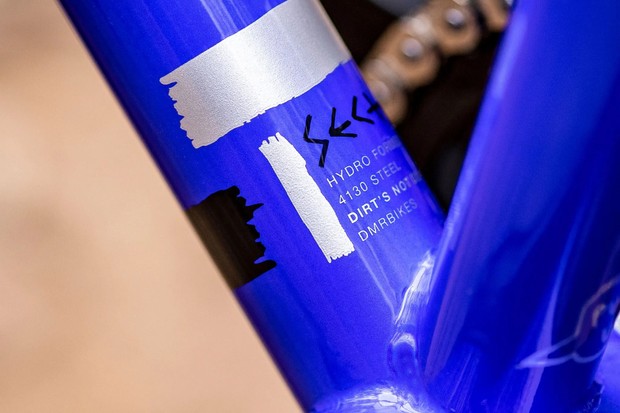
Steel: The Classic Choice for High-End and Bespoke Dirt Jumpers
Steel has long been revered as the ideal material for high-end and custom dirt jumpers, and it is favored by renowned brands like DMR for good reason.
This noble metal pays homage to the early designs, showcasing its exceptional ability to absorb vibrations, its retro aesthetic, and its undeniable strength.
Alloy: A Popular Alternative
While some riders opt for steel frames, others prefer the allure of an alloy frame. This lightweight material is highly popular, particularly on contemporary, competition-focused models from NS Bikes, Specialized, Canyon, and other esteemed brands.
Alloy boasts an impressive ratio of strength to weight, coupled with enhanced stiffness, all at a more affordable price point. It is a top choice for those seeking remarkable performance within a reasonable budget.
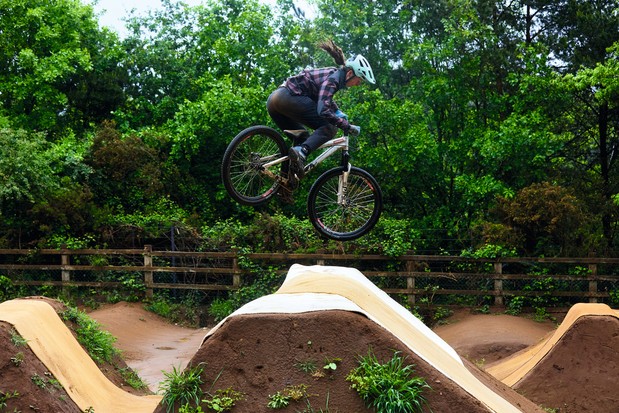
Dirt Jump Bike Geometry: Balancing Manoeuvrability and Stability
When it comes to dirt jump bike geometry, finding the perfect equilibrium between manoeuvrability and high-speed stability is paramount. DMR Bikes recognizes this, offering their dirt jump bikes in a universal size.
The geometry of these bikes is ingeniously crafted to effortlessly navigate tight transitions, conquer jumps, and master pump track berms, all while maintaining the necessary stability for high speeds and breathtaking aerial maneuvers.
Straddling the line between a BMX and a trail mountain bike, dirt jump bike geometry is unquestionably unique and tailored to its specialized purpose.
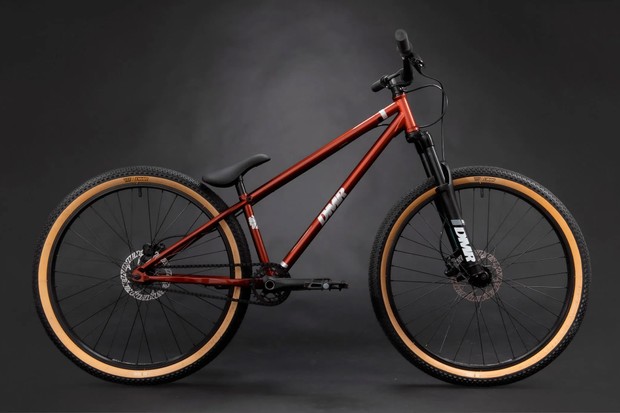
A dirt jump bike’s head angle tends to be steeper in comparison to most modern mountain bikes. James W / DMR BikesReach measurements typically hover around the 420mm mark, resulting in a shortened and agile front end. Head tube angles range from 67 to 70 degrees, granting riders highly responsive steering capabilities for executing tricks on steep take-offs.
Riders looking to conquer steep dirt jumps and tight skate parks
If you are searching for an exhilarating adventure in very steep dirt jumps and tight skate parks, then a dirt jumper with short chainstays is the perfect companion for you. This type of bike offers exceptional maneuverability and control, allowing you to navigate through challenging terrain with ease.
On the other hand, riders who prefer fast pump tracks and jump parks
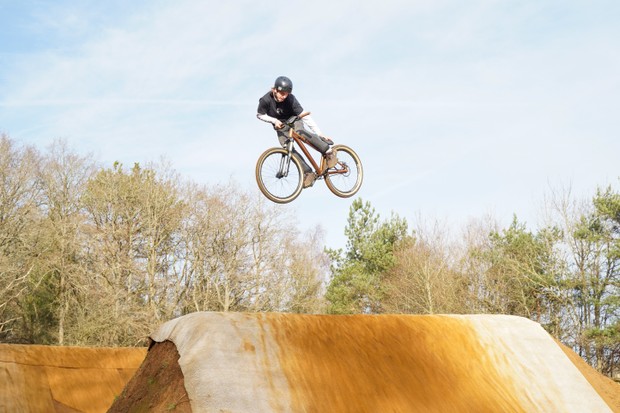
However, if your preference lies in riding fast pump tracks and jump parks, a dirt jumper with longer chainstays will provide you with enhanced stability at high speeds. With longer chainstays, you can maintain balance and tackle obstacles with confidence, ensuring a smooth and thrilling ride.
Adjustable dropouts for optimal chainstay length
Fortunately, many dirt jump bikes are equipped with adjustable dropouts due to their single-speed design. This ingenious feature allows you to effortlessly modify the length of the chainstays while on the move, albeit by a slight amount. This adaptability ensures that you can fine-tune your bike’s performance according to your specific riding needs.
Is suspension necessary for dirt jump bikes?
When it comes to dirt jump bikes, most of them are hardtails with no rear suspension. However, full-suspension dirt jump bikes, like the remarkable Canyon Stitched 720, are an exception that offers a unique riding experience. These bikes are equipped with rear suspension, providing additional comfort and control while conquering challenging terrains.

Rare existence of full-suspension dirt jump bikes
Although few and far between, there are some full-suspension dirt jump bikes available. However, these bikes are predominantly seen in slopestyle or 4x events, catering to the needs and demands of professional riders seeking the utmost performance and versatility.
The Marzocchi Bomber DJ: A specialized suspension fork for dirt jumping
Among the exceptional options for dirt-jump specific suspension forks, the Marzocchi Bomber DJ stands out. Designed explicitly for dirt jumping, this suspension fork enhances your riding experience by providing ultimate control and stability. It is worth noting that these suspension forks are not intended for use on rough trails but are commonly utilized on dirt jump bikes to cushion landings and absorb harsh compressions.
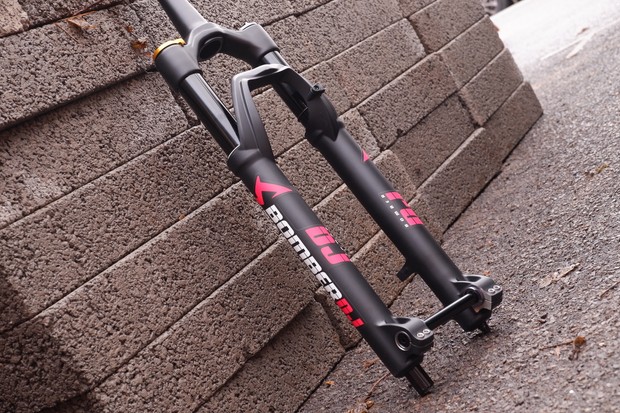
Short-travel suspension forks for added comfort
While they may not be suitable for rugged trails, it is quite common to see dirt jump bikes equipped with short-travel suspension forks. These forks typically offer a travel range of 80 to 120mm, with 100mm being the most prevalent. The purpose of these forks is to minimize the impact of landings and smooth out rough terrain, ensuring a more comfortable and enjoyable riding experience.
Specialized Dirt Jump Forks
Within the realm of mountain biking, certain brands like RockShox offer specialized dirt jump forks, including their renowned Pike DJ model. These forks are specifically designed for the rigors of dirt jumping. On the other hand, several other brands opt to equip their regular forks with shorter travel to cater to the needs of dirt jump riders.
When it comes to setting up your dirt jump suspension, the process is usually straightforward and requires minimal adjustments. The goal is to achieve extreme stiffness in your fork. Once you’ve discovered your preferred settings, there is little need to tinker with them further.
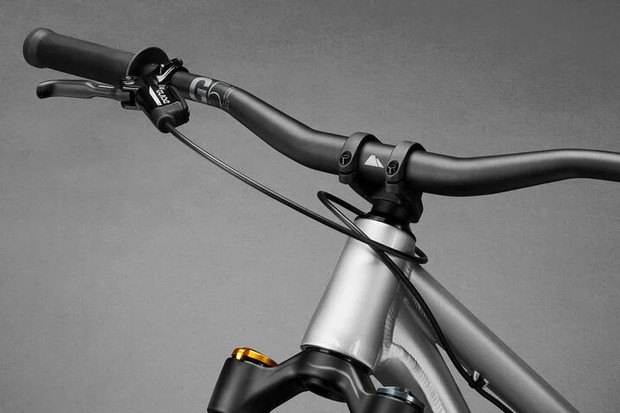
Unlike trail or enduro bikes, where a suspension fork is usually set with a sag of 15 to 20 per cent, dirt jumpers typically prefer a sag of 5 per cent or even less.
While some dirt jump bikes come equipped with a rigid, BMX-style fork, the majority of riders prefer the comfort and control offered by a suspension fork. Although using a rigid fork simplifies the bike, reduces weight, and cuts costs, most riders opt for a suspension fork to enhance their riding experience.
Dirt Jump Bike Components: Built to Last
When it comes to the components of a dirt jump bike, durability is of utmost importance. Weight is not a major concern, as these bikes need to withstand crashes and heavy impacts without flinching. Therefore, carbon components are generally not used in this context.
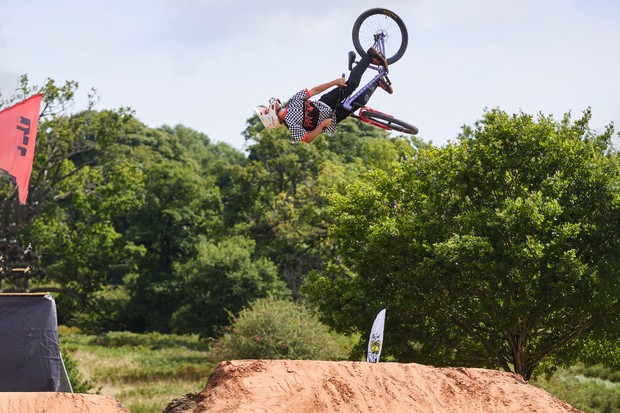
The cockpit setup of dirt jump bikes is highly individualized, but as a general rule, these bikes are often equipped with stubby stems and wide handlebars. Canyon offers exceptional dirt jump bikes that exemplify the ideal component specifications.
The typical dirt jump cockpit configuration consists of short stems ranging from 35 to 40mm and handlebars with widths between 740 and 780mm, which have become the standard.
Handlebar width is a personal preference, and riders who enjoy executing tricks such as trail whips and barspins may choose to customize their bars by cutting them down.
Most dirt jump bikes are designed with only a rear brake. The absence of a front brake helps prevent cables from tangling during inverted maneuvers, ensuring optimal safety and maneuverability.
While some complete dirt jump bikes are sold with front and rear brakes, many riders prioritize simplicity and performance by eliminating the front brake altogether.
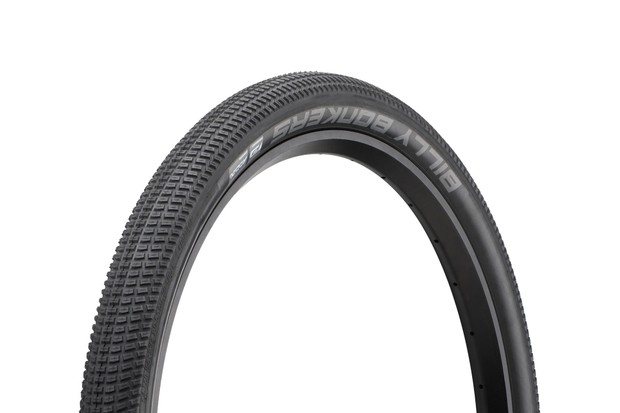
The Importance of Brakes in Dirt Jumping
The front brake hose can easily become entangled when executing tricks. Dirt jumps, with their smooth descents and flat slopes, require the use of brakes mainly during the approach and departure from the jump spot.
Consequently, most dirt jump bikes are equipped with compact 160mm rotors to optimize their performance.
The Role of Seats in Dirt Jumping
Unlike traditional pedaling, dirt jumpers utilize BMX seats mounted low on the post. These seats are not intended for use while pedaling. Their purpose is solely for safety and stability during seat-grab tricks.
Enhancing Performance with Wheels and Tires
Dirt jump tires feature closely positioned square knobs. Interestingly, dirt jump bikes are the sole modern mountain bike variant that still relies on 26in wheels.

The smaller wheel size enhances maneuverability and responsiveness in tight off-road terrains.
In addition, 26in wheels possess remarkable rigidity and strength, allowing them to endure harsh landings and challenging jumps.
Characteristically, dirt jump tires have a smooth and shallow tread pattern.
Due to their robustness, 26in wheels are preferred over larger alternatives, especially when tackling demanding descents. These wheels enable dirt jump bikes to achieve both high speeds on smooth surfaces and excellent grip on hard-packed jumps or concrete skate parks.
To ensure optimum performance, dirt jumper tires are inflated to high pressures and often used in conjunction with inner tubes. This combination enables riders to confidently navigate challenging take-offs and berms without the risk of tire roll or burping.
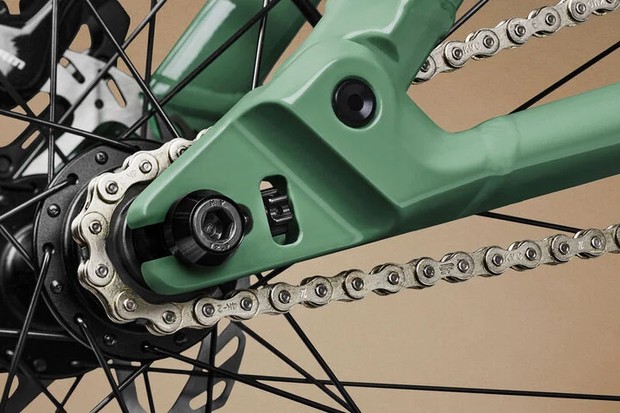
What are the characteristics of dirt jump bike drivetrains?
Dirt jump bike drivetrains
When it comes to dirt jump bikes, simplicity and durability are key. These gravity-assisted trail machines thrive on having just one gear. Opting for single-speed setups with a compact chainring, typically 28t or smaller, and a diminutive 9t rear cog, provides the perfect solution. This setup offers enough gearing to reach desired speeds and allows for effortless cruising.
Moreover, many riders prefer to equip their dirt jump bikes with a wider 1/8in chain. This choice offers enhanced strength compared to the 3/32in chains commonly found on multi-gear bicycles.
Additionally, if desired, modifying the gear ratio on a dirt jumper is relatively simple and budget-friendly. Swapping out the rear cog or chainring for a smaller or larger alternative allows riders to fine-tune their setup to their liking.
How do dirt jump bikes differ from BMXs?

What is the difference between BMXs and dirt jump bikes?
While BMX bikes are predominantly designed for urban riding, dirt jump bikes are tailored towards excelling in jumps and pump tracks rather than all-around street cycling.
With their larger 26in wheels, elongated frame geometry, and suspension forks, dirt jump bikes provide heightened stability and increased comfort. These attributes make them the obvious choice for high-speed dirt adventures.








